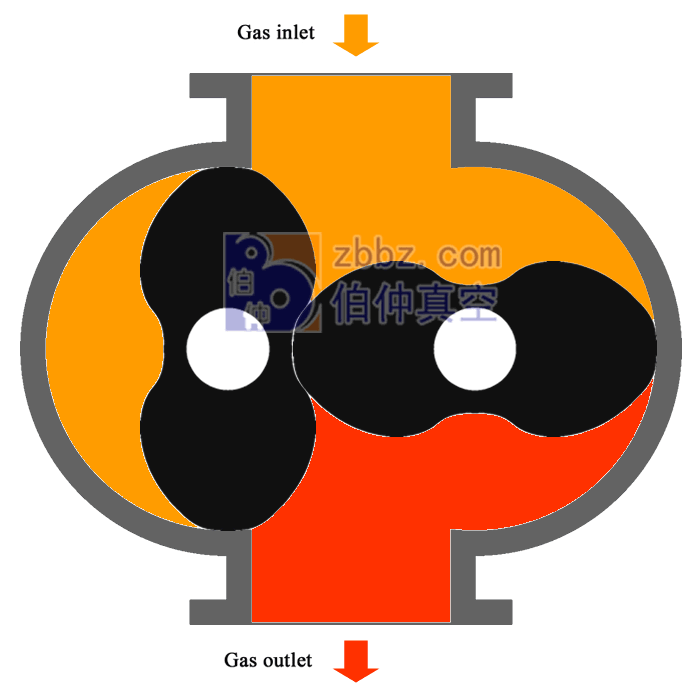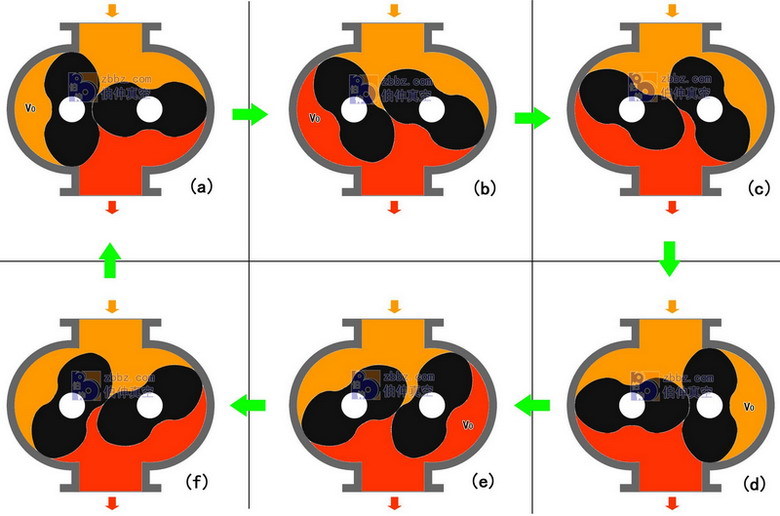Technical Services/ TECHNICAL
Products
Contact Us
BoZhong (Shandong) Industrial Equipment Co., Ltd. | Part of the Atlas Copco Group
Address: No.50# YiDa Road, NanDing Town, Economic Development Zone, ZiBo, ShanDong, China
Tel: +86-533-2530388
Website: en.zbbz.com
Working principle of Roots vacuum pump

The structure of the Roots pump is shown as Fig. In the pump cavity, there are two rotors in "8"-shape, which are mounted in a pair of parallel shafts; they do synchronous rotary motion opposite to each other driven by a pair of gears at the transmission ratio of 1. There are some gaps between the rotor and the rotor and the pump casing wall, and can achieve high speed operation. As the Roots pump is a kind of vacuum pump, usually the compression ratio is very low, so the high vacuum pump need to backing pump. The Roots pump vacuum degassing depends on the pump itself structure and manufacturing precision, but also depends on the backing pump’s ultimate vacuum. In order to improve the pump’s ultimate vacuum, the Roots pumps can be used in series.
Similar Roots pump working principle and Roots blowers. Due to the rotor continues to rotate, was pumping gas from the suction aspiration to the space V0 between the rotor and the pump shell, and then be discharged through the exhaust port. The post inspiratory V0 space is completely closed state, so gas at the pump cavity no compression and expansion. But when the rotor turn at the top edge of the exhaust port, V0 space is connected with the exhaust side, due to the higher exhaust gas pressure side, some gas back washed to V0 space to the gas pressure suddenly increased. When the rotor continues to rotate, the gas discharged from the pump outside.
Also from the pump, in conjunction with the pump inlet to below the Roots pump rotor from 0° to 180° pumping process. At 0℃ position (Figure a), left the rotor from V0 is sealed volume of gas. When turning to the Figure B, the chamber and the exhaust port are communicated. Due to the exhaust side pressure is higher, causing a portion of the gas back washed over. When transferred to the 90° position (Figure d), a left rotor enclosed gas back flushing gas discharged to the outside. At this time, the right rotor pump inlet V0 is sealed volume of gas.

Working principle of Roots vacuum pumpThree-dimensional demonstration



